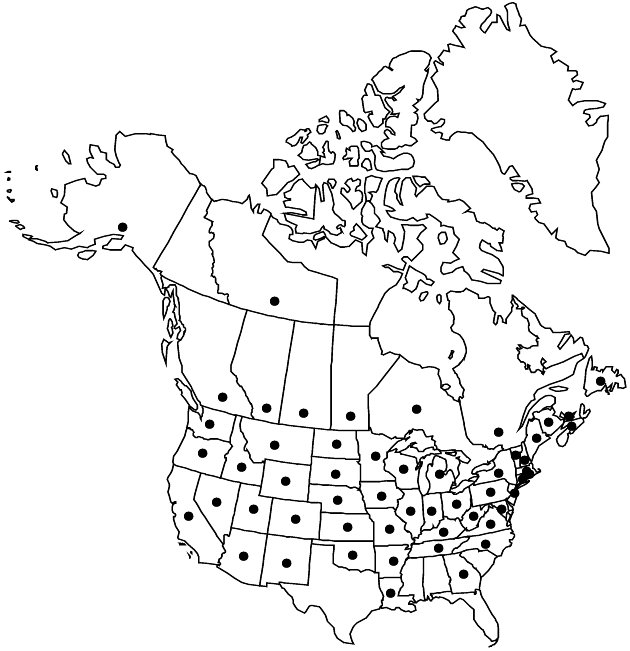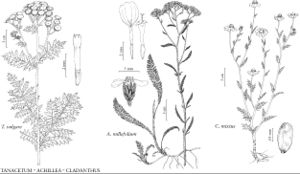Tanacetum vulgare
Sp. Pl. 2: 844. 1753.
Perennials, mostly 40–150 cm. Stems 1–2+ (ridged), erect, branched distally (glabrous or sparsely hairy). Leaves basal (soon withering) and cauline; petiolate or sessile; blades broadly oblong or oval to elliptic, 4–20 × 2–10 cm, pinnately lobed (rachises ± winged, primary lobes 4–10 pairs, lance-linear to lanceolate or narrowly elliptic, often pinnately lobed or toothed), ultimate margins dentate, faces glabrous or sparsely hairy, gland-dotted. Heads 20–200 in compact, corymbiform arrays. Involucres 5–10 mm diam. Receptacles convex to conic, epaleate. Ray-florets 0 (heads disciform, peripheral pistillate florets ca. 20; corollas yellow, lobes 3–4). Disc corollas 2–3 mm. Cypselae 1–2 mm, 4–5-angled or ribbed, gland-dotted; pappi coroniform, 0.2–0.4 mm. 2n = 18.
Phenology: Flowering Jul–Sep.
Habitat: Disturbed sites (often moist), abandoned plantings
Elevation: 10–1600 m
Distribution

Introduced; Alta., B.C., Man., N.B., Nfld. and Labr. (Nfld.), N.S., Ont., N.W.T., P.E.I., Que., Sask., Alaska, Ariz., Ark., Calif., Colo., Conn., Ga., Idaho, Ill., Ind., Iowa, Kans., Ky., La., Maine, Md., Mass., Mich., Minn., Mo., Mont., Nebr., Nev., N.H., N.J., N.Mex., N.Y., N.C., N.Dak., Ohio, Okla., Oreg., Pa., R.I., S.Dak., Tenn., Utah, Vt., Va., Wash., W.Va., Wis., Wyo., Eurasia, widely in New World and Old World
Discussion
Tanacetum vulgare escapes from and/or persists after cultivation. In the flora area, it is naturalized mostly in the northeastern and Pacific Coast states and provinces and sporadically elsewhere.
Selected References
None.
Lower Taxa
"broader" is not a number.
